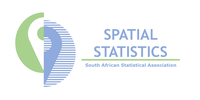Abstract
The identification of hotspots in spatial data has become an important part of spatial analysis. In some applications such as crime analysis and disease mapping the predication of location of a hotspot becomes important for local governments to implement preventative measures and prioritise the allocation of resources. In this work, we propose the use of the geographically and temporally weighted regression spatio-temporal Kriging (GTWR-STK) to predict observations at the next time step on spatial lattice data. A newly developed hotspot detection method is employed that uses the Discrete Pulse Transform (DPT) on spatial lattice data along with the multiscale Ht-index along with the Spatial Scan Statistic as a measure of saliency on the predicted observations.



